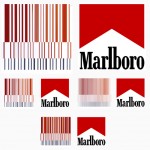It’s been several years since tobacco advertising and sponsorship has been banned and along with the expanding bans on smoking in restaurants and bars the means and ways to communicate their brand messages are becoming more clever and indirect.
In the mid-90’s I was in Singapore for a week and couldn’t help but notice that Dunhill was being advertised everywhere – but not the cigarettes, instead Dunhill was in the business of selling luxury goods including watches, luggage and apparel for men. I am not a smoker but couldn’t but help thinking this was a smart marketing decision because not only did Dunhill get to advertise its brand name it also associated itself with an upper class and distinguished class – which is exactly the target audience for the cigarettes. Of course the history of Alfred Dunhill (which is pipes, luxury goods and cigarettes) preceded the ban on tobacco advertising by 100 years but I was unaware of this at the time and wondered why more tobacco companies weren’t diversifying their product offerings in order to circumvent the ban.
More recently the folks at Marlboro have been using bar codes to communicate the brand on Formula 1 race cars. In Fast Company the article shows the before and after pictures of the race car showing the bar code. Although they have since been forced to remove these bar codes it was still an interesting and subversive way to advertise.
The question is could other brands deliver an effective advertising campaign using these methods, not because they are banned from outright advertising, but instead as a statement to draw attention to their uniqueness and universal appeal. Could brands such as Coca-Cola or Nike do this and get positive feedback? Many would say “why bother?” when they don’t have to. But why not? Nike need only use its swoosh or “Just Do It” slogan and never mention its name and there would be no doubt who it was.
If a brand is well immersed in popular culture then the subtle cues may be all that is required to successfully convey the message to the target audience. In other cases using social media to advertise without logo or any semblance of branding often looks less contrived and more grass roots in appeal. While at my previous agency, Creative Link, we did this for our Spectrum Athletic Clubs client by placing a non-branded ad on Facebook for a contest that worked very well and generated a lot of response.
There may also be the added benefit when targeting a unique group or audience that they are “in the know” about a specific brand or product that others are unaware of. Kind of like the secret menu at In-N-Out Burger there is sense of satisfaction that you have the key to the lock which makes you a part of the “In Group”.
At any rate, there are many subtle advertising methods such as billboards, television, including train station advertising is quickly seen by people and possibilities that marketers and advertisers should consider employing (when appropriate) to gain a unique advantage in the market place.

